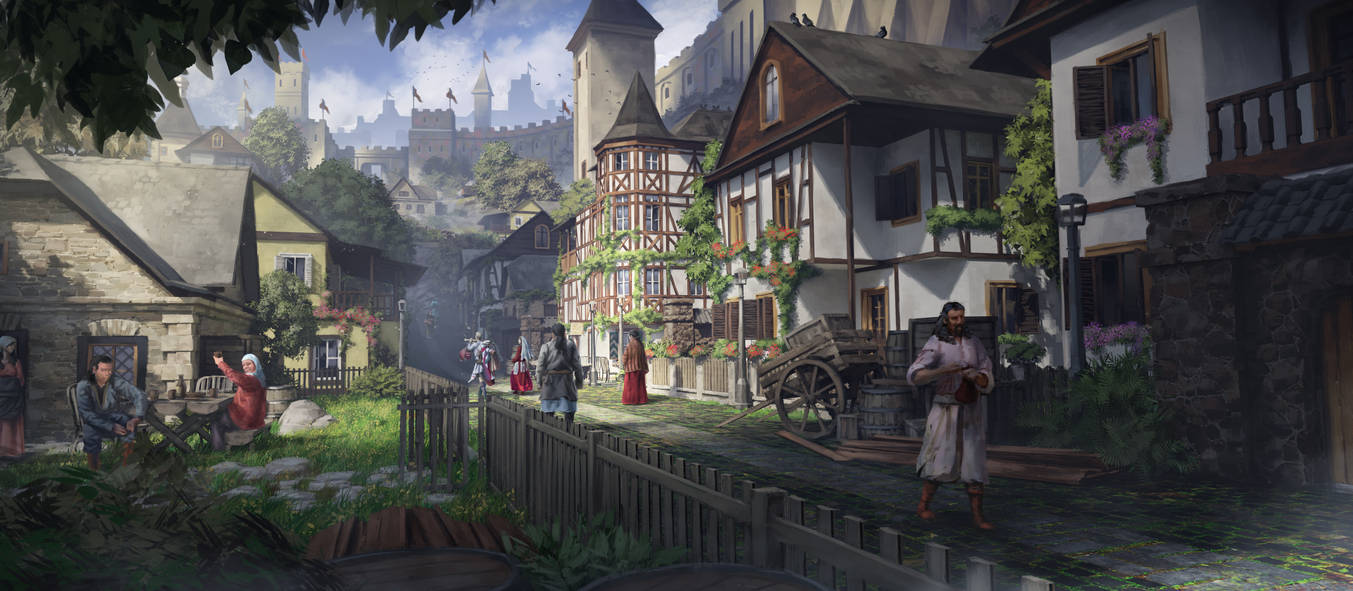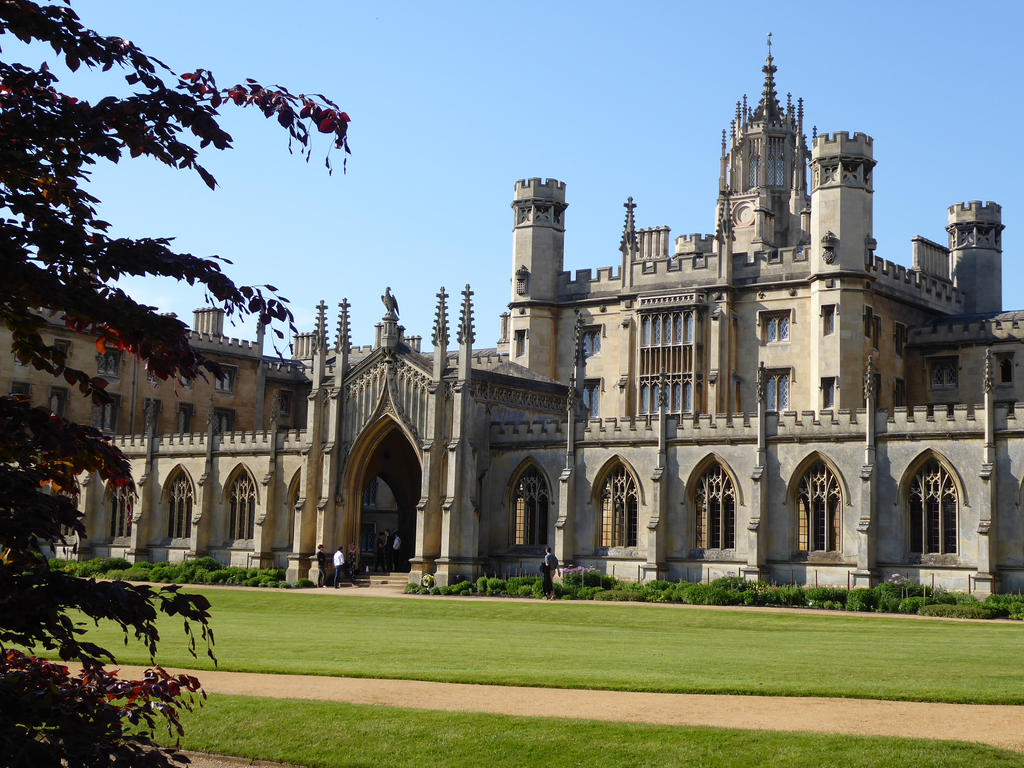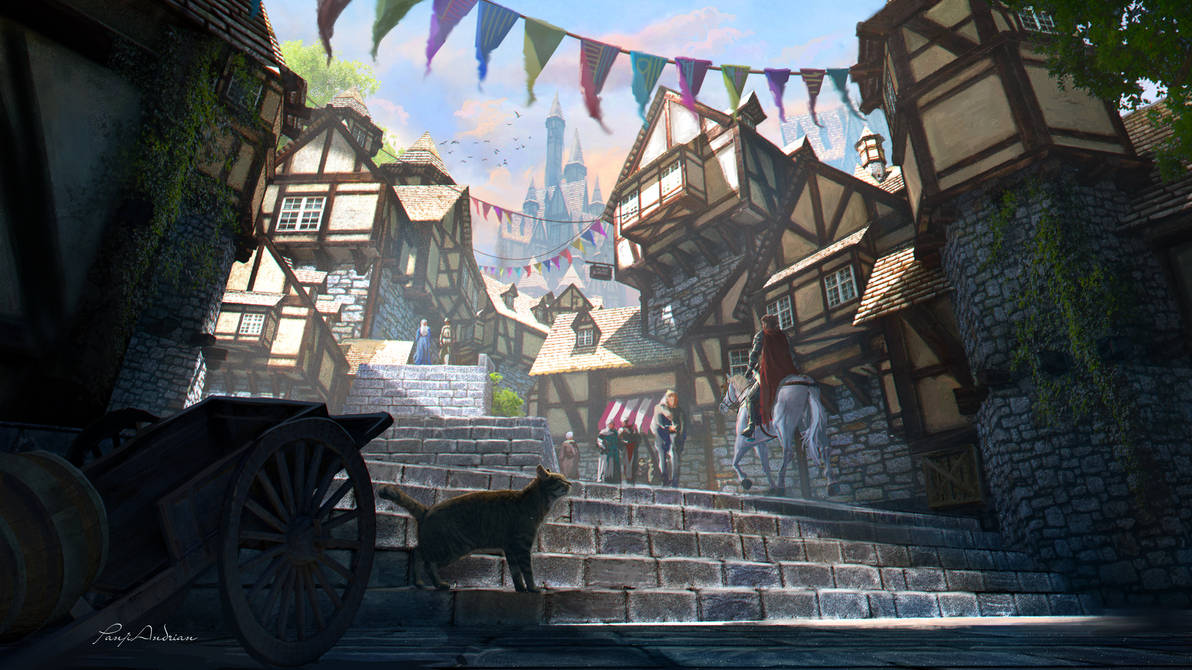The approach to Varrock is ringed with small, nameless farming hamlets. Living on the outskirts of a monolithic city affords its own kind of protection, freeing up more hands for more farming. A cannon
errantly fires off from atop a bastion on the city wall; the resounding thump rings in your chest, even at this distance. The other wagoneers traveling the road jump; a boy leaps off the back of a grain
cart to eagerly look out for any invading armies or fearsome dragons being fired upon. Disappointingly, it seems it was some sort of accident.
These things happen when you have an army the size of Lumbridge's entire population
protecting the city.
Just getting up to the gates of Varrock requires stoppage at multiple checkpoints to have your visit logged by employees of the Exchange. It's exhausting, but they say the streets are paved
with gold. Already, this is the most dizzying, the most smelly, the most wealthy, the most crowded, the most grand city you have ever laid eyes on. You're not even inside yet. Welcome to Varrock.
Varrock is often described as "the most spectacular monument to humanity" and "the crown jewel of Gielinor", statements that only sound hyperbolic until one sees the Ancient Capital for themselves.
The great city of Varrock is the largest in Gielinor by a country mile, boasting a staggering population of around 1,700,000 citizens (The second largest, Ardougne, has roughly half that number).

Historically known as "Avarrocka", and "Arravaka" before that, the city is the oldest continually occupied settlement in Gielinor, having been founded in the middle of the 3rd Age.
According to the Chronicle of Avarrocka (an ancient tome
recounting the history of the city), a tribe of men in the untamed wilderness were fleeing the destruction of their old home at the hands of the roving bands of goblins. Dying of starvation and exhausted, the
beleaguered survivors came upon a gentle river and a small boy on its shore, gazing into its waters. He had no recollection of his parents and was unable to speak, though this was clearly no ordinary boy -- he
stood nearly a foot taller than other children his age and was astonishingly strong.
The elders of the tribe interpreted this as a positive omen and established their village on the banks of this river.
It is said that on this day, the sun and the moon were mingled in the sky. This boy became a legendary hero (Arrav is apparently a curse word in the goblin tongue), and the settlement gained his name as he became
Arrav I, first high king of Misthalin. His shield, battleaxe, and crown are part of the Royal Regalia of Misthalin, allegedly stored (along with Arrav's skeleton) in the "Holy Cathedral of the New Arravicanist"
(or Varrock Church, if you're short on time).
Varrock in modern times is famously a hub of culture and the sciences across all of Gielinor. Though Misthalin is not particularly wealthy, Varrock most certainly is, and King Aethelsea III has a reputation
for granting lavish amounts of money for the "Universitas Scholarium", a union of scholastic guilds and universities across Varrock (some would say too much; Aethelsea III is often derisively called
"the bohemian king").

New thoughts on the nature of Saradomin, on the nature of men, and on the nature of life and the beauty of the world are churned out of Varrock like sausages, to say nothing of the monumentous scientific and
arcane innovations. People from all over Gielinor and beyond are drawn to the many, many academic conferences on the natural sciences (The Grand Museum of Misthalin is famous for its archaeological artifacts and
natural specimens) and artistic salons (The Arcades of Pearl is the most exclusive gallery to the arts in Misthalin; only the most accomplished poets and painters are invited, and it's rumored that the Arcades
are home to a debauched club of aristocrats who indulge in carnal vices in Zamorak's name on moonless nights).
Beyond the high concept art and innovative science, Varrock is also Gielinor's economic heart; the Grand Exchange is Gielinor's first (and only) stock exchange. Most of Gielinor's monarchies and influential
figures keep their assets stored there, buying and trading shares of guilds and other such enterprises.
On the approach to the city, the first thing one sees are naturally Varrock's walls. Ancient triumphs of stonemasonry, Varrock's walls are as astounding as they are tall, taking almost 130 years and 4 monarchs to
finally complete. Their height casts long shadows on the city; the poorest slums of the city are often huddled in regions right against the walls, where the sun only touches at noon in the summers. The walls height is
supplemented by the rocky hills they're built on; large portions of Varrock are in a depressed valley, only aiding their apparent scale. The entire army of Misthalin could be garrisoned on the walls, shoulder to shoulder,
and still
not fully wrap upon itself.

Of particular note is the Culinary Guild of Misthalin, an elite guild of masters of cookery, giving
Varrock not only a wide variety of goods to buy, but also food to eat. This naturally goes hand in hand with Misthalin's particular abundance of farmland; hundreds of restaurants and grocers cluster in every
district and neighborhood in the city. The Master of the Culinary Guild usually cannot be found in Varrock, however; in fact, few even realize they're talking to them. They're said to wander Gielinor incognito,
showing up in the halls of the most esteemed monarchs and the soup kitchens for the poorest of the poor, creating incredible dishes before vanishing again. They've become something of a mythical figure.
Lastly, Varrock is home to a thriving community of craftsmen and tradespeople; though the city has its poor districts, it doesn't seem to be particularly hard to find a market for one's trade in a city as flush
with cash as Varrock; everything and anything one could possibly require is traded in the Market District. The bustling throngs of people are bewildering to those accustomed to the quiet solitude of
Misthalin's countryside; these people are refugees, entrepeneurs, itinerant workers, acolytes, entertainers, historians, and families. What they typically are not is non-human -- It may be simple demographic coincidence,
but non-human races are largely absent from Misthalin (aside from goblins). This is reflected in the demographics of Varrock; only humans seem to settle here, though many races visit.